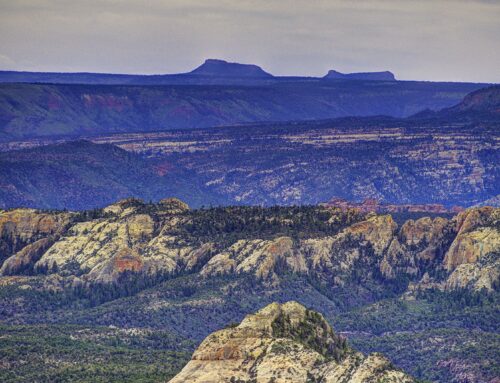Date: Tuesday, September 13, 2022
Contact: Interior_Press@ios.doi.gov
WASHINGTON — The Department of the Interior today released new guidance to improve federal stewardship of public lands, waters and wildlife by strengthening the role of Tribal governments in federal land management. New guidance from the Bureau of Land Management (BLM), National Park Service, and U.S. Fish and Wildlife Service (FWS) outlines how each bureau will facilitate and support agreements with Tribes to collaborate in the co-stewardship of federal lands and waters.
“From wildfire prevention to managing drought and famine, our ancestors have used nature-based approaches to coexist among our lands, waters, wildlife and their habitats for millennia. As communities continue to face the effects of climate change, Indigenous knowledge will benefit the Department’s efforts to bolster resilience and protect all communities,” said Secretary Deb Haaland. “By acknowledging and empowering Tribes as partners in co-stewardship of our country’s lands and waters, every American will benefit from strengthened management of our federal land and resources.”
In managing public lands and waters, the Department is charged with trust responsibility and treaty rights to protect American Indian and Alaska Native Tribal interests and further the nation-to-nation relationship, and with distinct obligations to the Native Hawaiian Community. Tribal consultation and collaboration will continue to be implemented as components of, or in addition to, federal land management priorities and direction for recreation, range, timber, energy production, and other uses, and conservation of wilderness, refuges, watersheds, wildlife habitat, and other values.
The guidance will help further the directives from Joint Secretarial Order 3403 – signed by the Secretaries of the Interior and Agriculture during the 2021 White House Tribal Nations Summit – which outlines how the two Departments will strengthen Tribal co-stewardship efforts. The guidance also outlines how agreements might proceed with Alaska Native corporations and the Native Hawaiian Community.
Since the Joint Secretarial Order was signed, the Interior Department has celebrated a number of co-stewardship agreements, including:
- Bears Ears National Monument in Utah: On June 18, 2022, the BLM, U.S. Forest Service, and five Tribes of the Bears Ears Commission formalized their partnership for co-management of the Bears Ears National Monument. The BLM and U.S. Forest Service will provide resources to each Tribe through a separate process to support the work that the five Tribes will perform under this agreement and through their representatives on the Bears Ears Commission.
- Confederated Salish and Kootenai Tribes Bison Range Restoration in Montana: On January 2, 2022, the Confederated Salish and Kootenai Tribes (CSKT) assumed full management of the Bison Range. The FWS and CSKT continue to partner together to ensure the land and resources are managed at a high-level including prioritizing much needed improvements to address deferred maintenance to enhance safety to the public and wildlife.
- Rappahannock Indian Tribe’s Homeland Restoration in Virginia: On April 1, 2022, the Rappahannock Tribe’s re-acquired 465 acres of their ancestral homelands at Fones Cliffs, a sacred site to the Tribe and a globally significant Important Bird Area for resident and bald eagles and other migratory birds. The land is located within the authorized boundary of the Rappahannock River Valley National Wildlife Refuge; the parcel will be owned by the Tribe and be publicly accessible and held with a permanent conservation easement conveyed to FWS.
- Dworshak National Fish Hatchery Transfer to the Nez Perce Tribe in Idaho: On June 16, 2022, the Department transferred fish production at Dworshak National Fish Hatchery to the Nez Perce Tribe. The FWS will continue to provide support to the hatchery through the Idaho Fish and Wildlife Conservation Office and Pacific Region Fish Health Program.
The Interior Department is responsible for the management of millions of acres of federal lands and waters that were previously owned and managed by Tribes and also manages many important natural and cultural resources that once belonged to the Native Hawaiian Community. Those lands and waters contain cultural and natural resources of significance and value to Indigenous peoples, including sacred religious sites, burial sites, wildlife and its habitat, and sources of Indigenous foods and medicines. In addition, many of those lands and waters lie within areas where Tribes have the reserved right to hunt, fish, gather plants, and pray pursuant to ratified treaties and other long-standing legal agreements with the United States.
The Department is committed to ensuring that decisions relating to co-stewardship will continue to advance safeguards for traditional subsistence, cultural practices, trust interests and treaty rights for Tribes. Each bureau publishing guidance today is taking steps to ensure that Tribal governments play an integral role in the continued management of federal lands and waters through consultation, capacity-building, and partnerships consistent with federal authority.
Find the DOI’s Press Release here.


